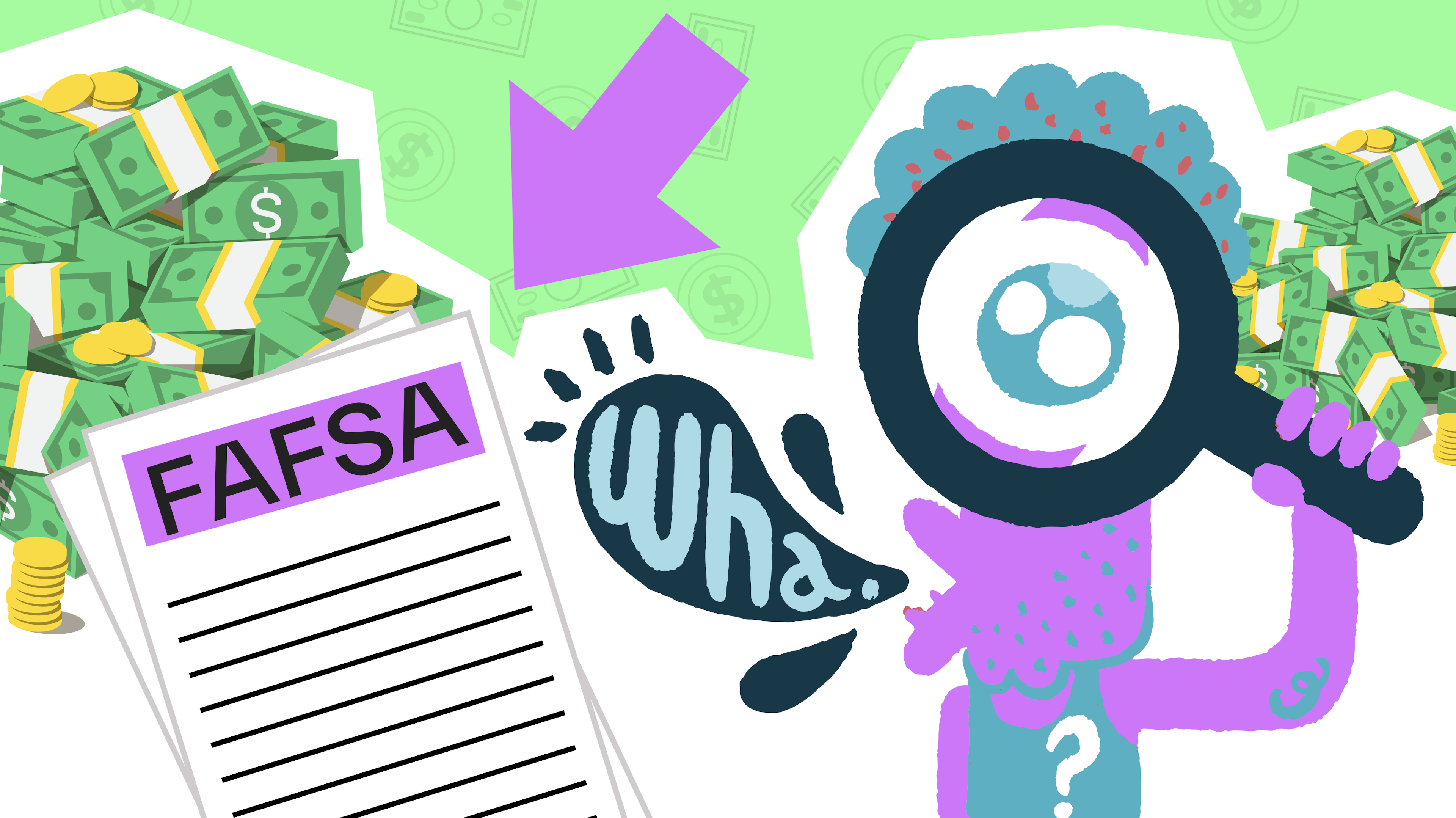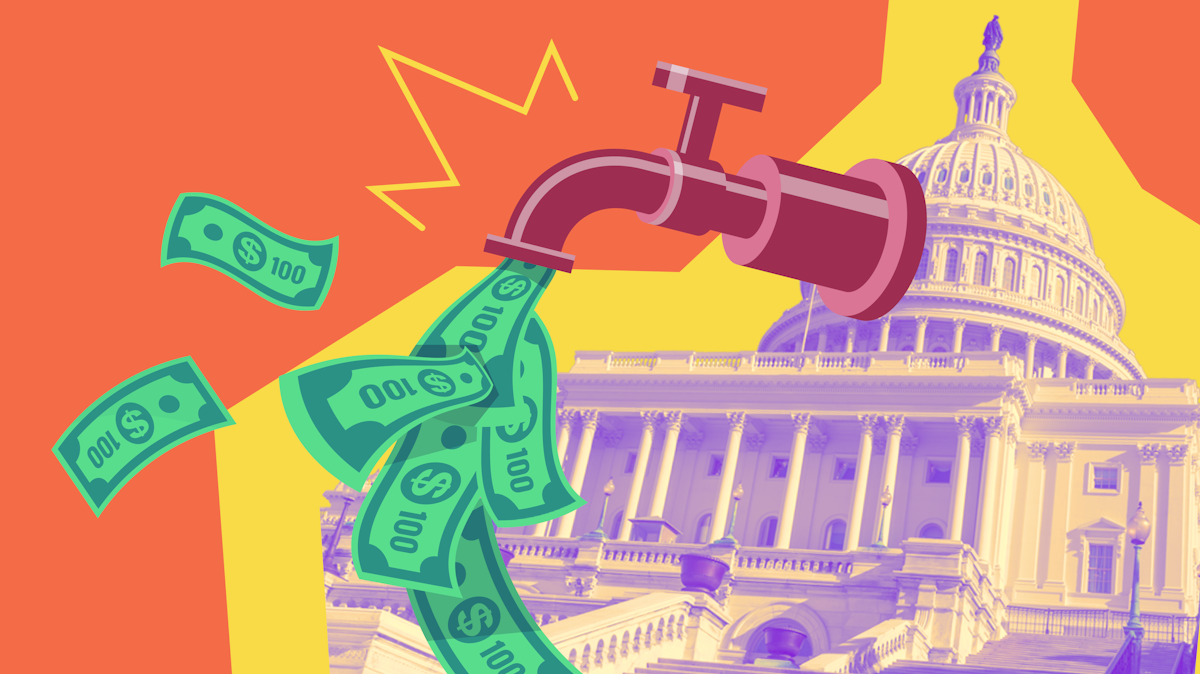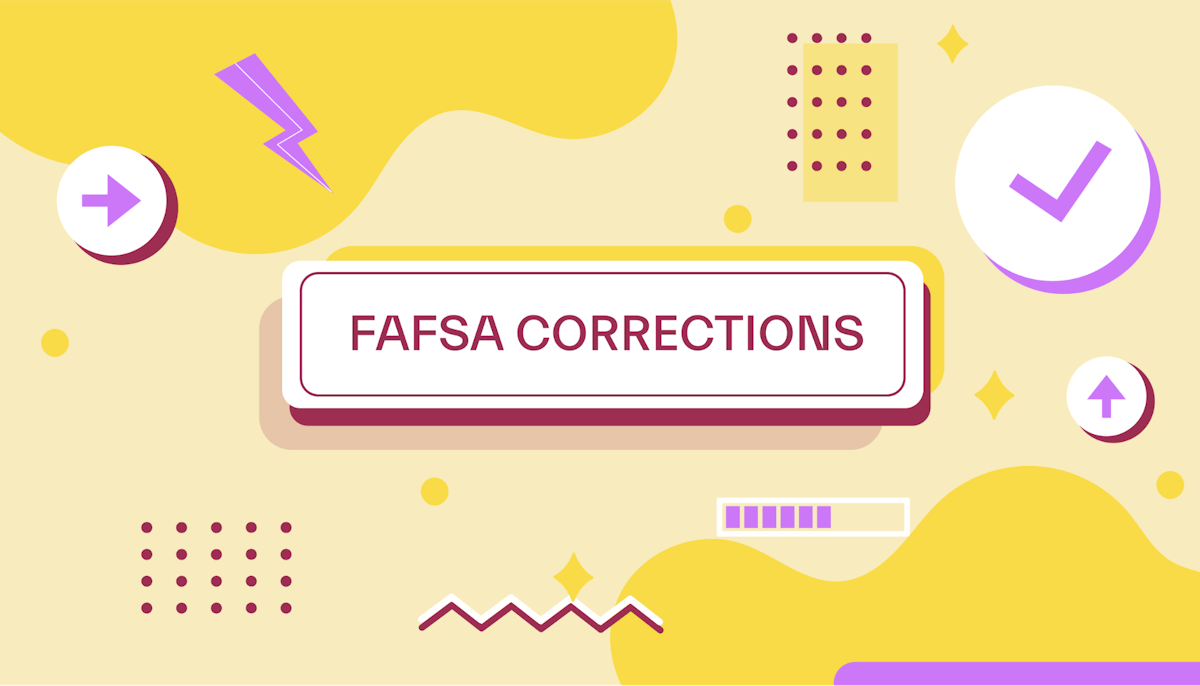FAFSA •
December 14, 2023
10 confusing FAFSA terms, explained
The FAFSA terms can be confusing, we took the top 10 most confusing ones and broke them down for you.

The Free Application for Federal Student Aid (FAFSA) is about to open, which means you’re about to deal with the brain-melting bureaucratic language that always shows up in important paperwork. These terms all have pretty basic definitions, but nobody ever explains them in school.
While the official Federal Student Aid site was good enough to put together a glossary for students, some of their language is a little dry. We used that and a few other sources to explain some important terms in more basic language.
1. Master Promissory Note
If you take out a federal student loan, you fill out a document that has all the details of that loan. That’s the Master Promissory Note.
2. Default
What happens if you don’t make payments on a loan? That loan can go into default. A default can make it harder to get federal aid, and can get you into legal trouble.
3. Acceleration
If you take out federal loans, the government can ask for all of the money you owe them back at once, including interest. That’s acceleration.
This generally happens if you don’t follow the loan’s requirements, like if you use your loan money on Botox and Sephora instead of school.
4. Debt consolidation
Let’s say you owe $10 to Adrian, $10 to Bob, and $10 to Carlos.
Then Dana comes along and offers you a $30 loan, which you can use to pay the other three.
If you agree, you’re consolidating your debt with Dana.
5. Judgment lien
If you don't pay your debts, the person you owe money to can take you to court. If you lose the court case, the judge can give them the rights to a property you own.
The court’s decision to give away your property is a judgment lien.
If the court gives your property to the United States government in a judgment lien, you won’t qualify for federal student aid.
6. Loan deferment, discharge, forbearance and forgiveness
A few things can happen to your loan, like:
Deferment - When the dates of your loan payments are pushed back. The amount of interest you owe can still increase.
Discharge - If something happens to you that keeps you from paying off a loan, you can get some or all of that loan canceled.
Forbearance - When your loan payments are temporarily paused or decreased. The amount of interest you owe can still increase.
Forgiveness - When you don’t have to pay back some or all of your loan, ever.
7. Principal
When you take out a loan, the principal is the amount of money you get.
8. Interest
When you take out a loan, you usually don’t just pay back the principal. Interest is the extra money you pay on top of the principle.
9. Withholding
When you get paid, the government takes money out of your paycheck. That money goes toward your yearly taxes.
In other words, they withhold money from you, since you’ll just owe it to them later anyway.
If the money they take out ends up being less than your taxes, you have to pay them more during tax season. If it’s more than you owe, they give you money back in a tax refund.
10. Treasury offset
Sometimes, you and the government can owe money to each other.
The Federal Student Aid site has a good example: What happens when you owe the government a student loan payment, but they owe you a tax refund?
The government takes the money they owe you and pays it toward your debt. That’s a treasury offset.
Hopefully, that clears up some confusion. For personalized help navigating the financial aid process, check out Mos!
[Sources]
Let's get
your money
- Get paired with a financial aid expert
- Get more money for school
- Get more time to do you




